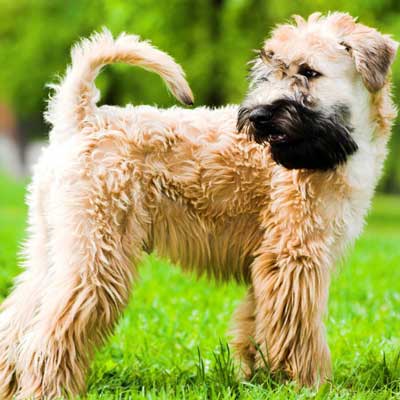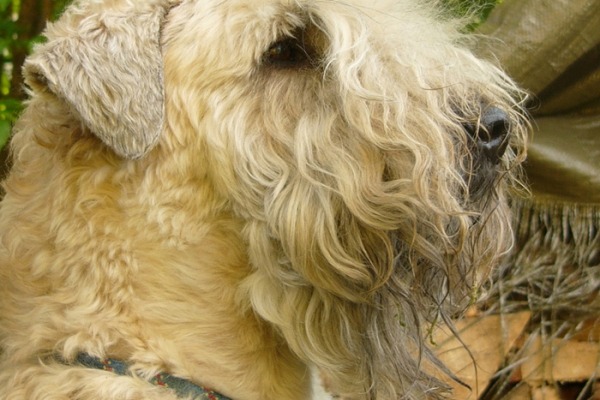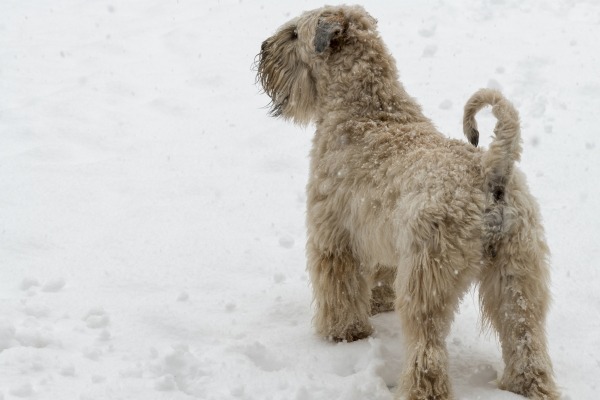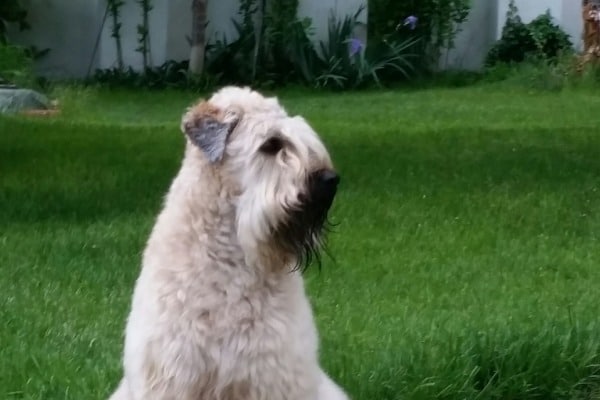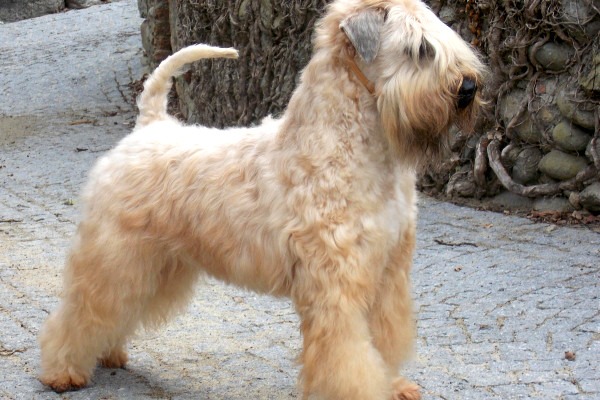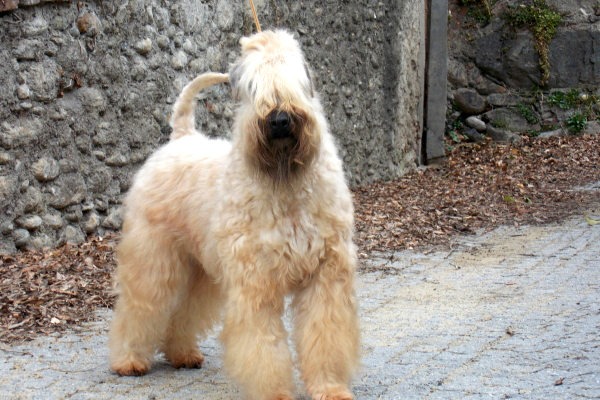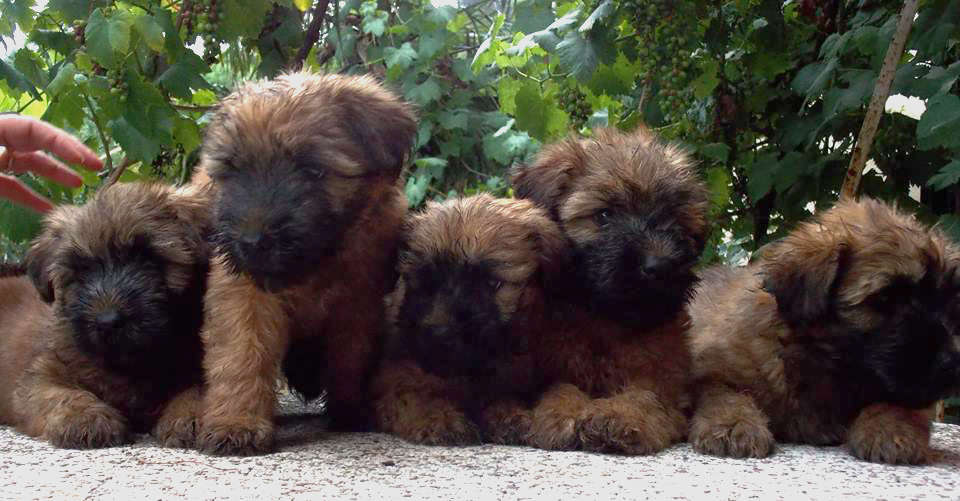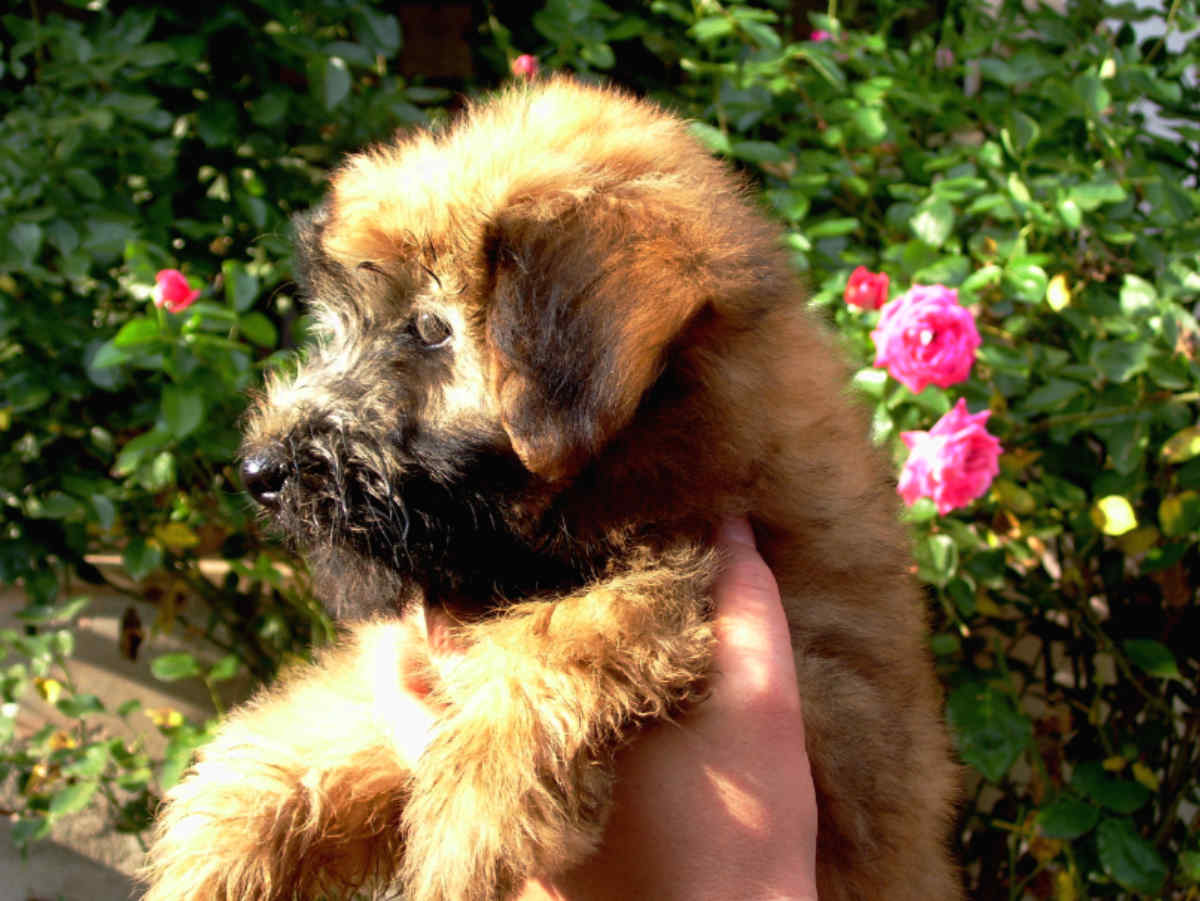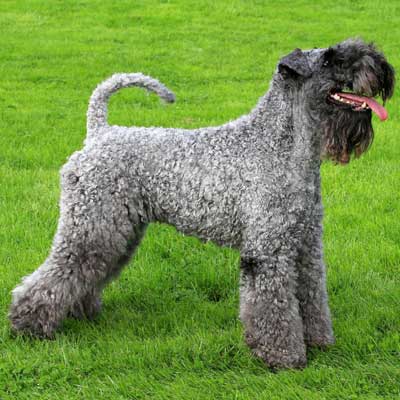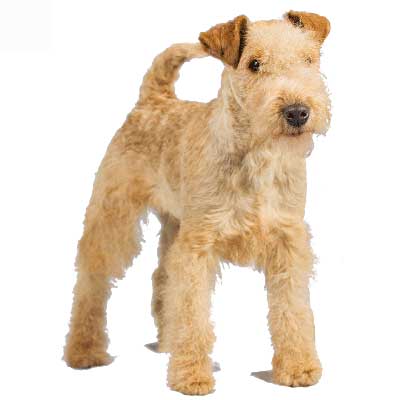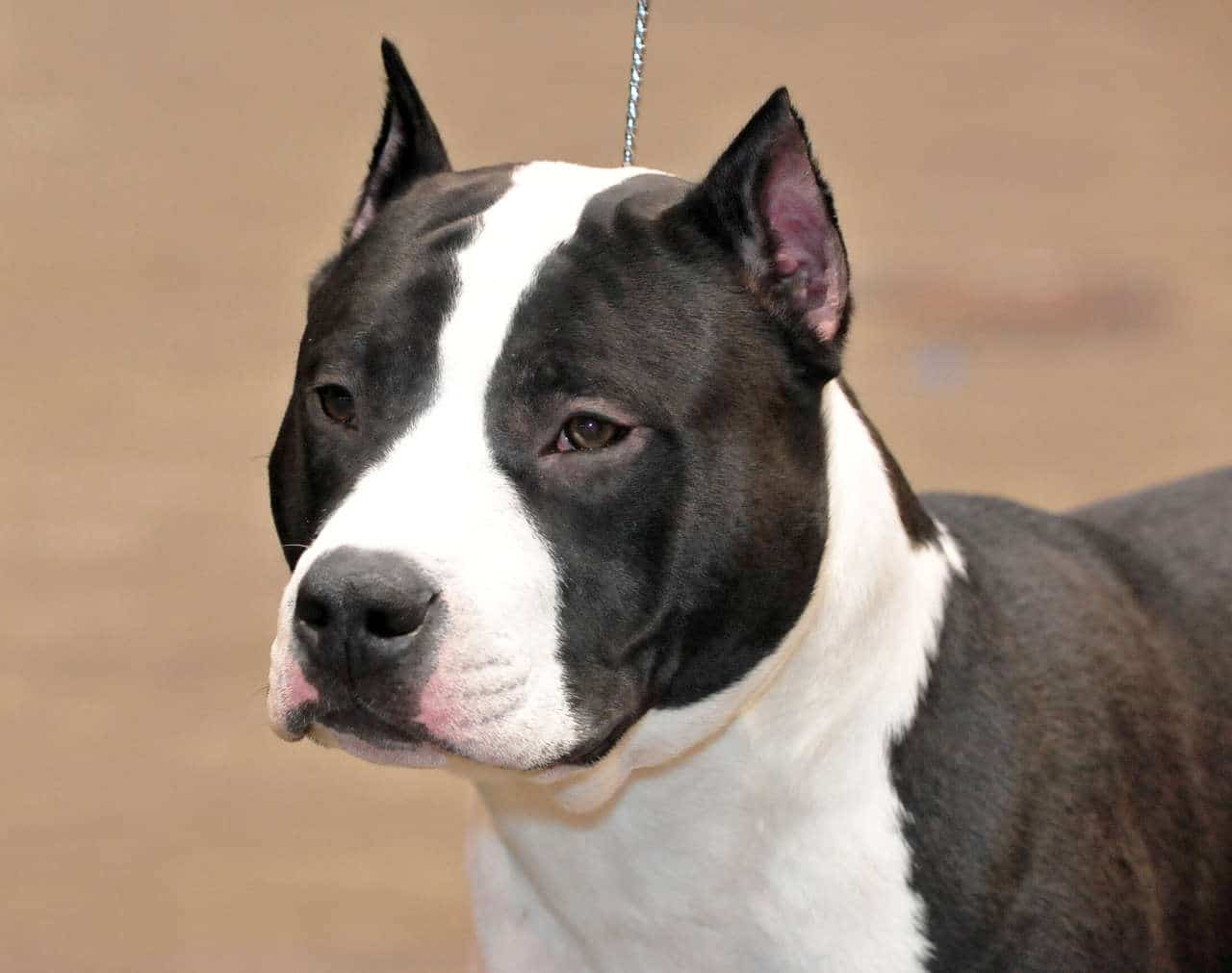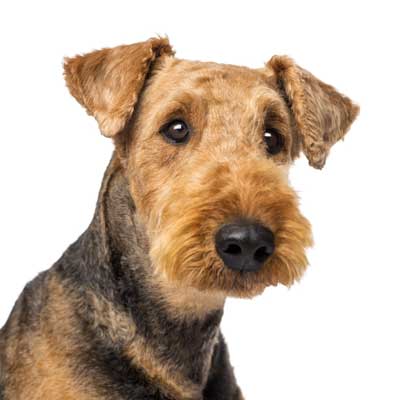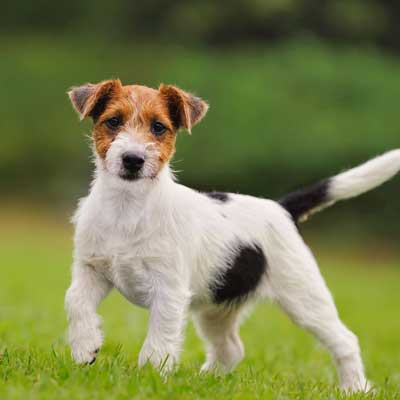Irish Soft Coated Wheaten Terrier
Smart, friendly and well balanced! He is always a friendly player
The history of the Irish Soft Coated Wheaten Terrier has been somewhat obscured by its closeness to the other Irish Terrier breeds.The Wheaten is probably the oldest of the four breeds. Its existence for at least 200 years can be inferred from textual references to "soft-coated" dogs.The relation of the modern Irish Terrier to the Wheaten, though less well documented, appears to have been the result of deliberate breeding experiments. So the humble Wheaten probably has a fairly mixed ancestry.Despite the long history of the Wheaten, it wasn't until 1937, that the Soft Coated Wheaten was officially recognised by the Irish Kennel Club.The breed has grown steadily in popularity since and is now well known world-wide.
-
Head
In general, powerful without being coarse. Long, in good
proportion to the body. Hair same colour as on body -
Head - skull region
Skull: Flat and clean between ears, not too wide.
Stop: Defined. -
Head - facial region
Nose: Black and well developed
Muzzle: Foreface not longer than skull
Jaws: Jaws strong and punishing
Teeth: Teeth large, regular; scissor or level bite (i.e.edge to edge)
neither undershot nor overshot
Cheeks: Bones not prominent
Eyes: Dark, dark hazel, not too large, not prominent, well placed
Ears: Small to medium, carried in front, level with skull. Dark
shading on base of ear allowed and not uncommon, accompanied by a light wheaten coloured overlay. This is the only area of the dog where under-coat is allowed. "Rose" or "flying" ears are objectionable -
Neck
Moderately long and strong but not throaty -
Body
Not too long. Length from withers to base of tail approximately the same as from ground to withers
Back: Strong and level with even top line
Loins: Short, powerful
Chest: Deep, ribs well sprung -
Tail
Well set, not too thick. Carried gaily but never over the back.
The tail is docked so that two thirds of its original length remains
assuming it is in proportion to the dog. An undocked tail is
permitted. -
Forequarters
Shoulder: Fine, well laid back, muscular
Foreleg: Perfectly straight viewed from any angle. Good bone and muscle
Forefeet: Small, not spreading. Toenails preferably black but
varying dark colours allowed -
Hindquarters
Well developed with powerful muscle
Thigh: Strong and muscular
Stifle (Knee): Bent
Hock joint: Well let down, turned neither in nor out. Hind dewclaws should be removed -
Feet
Small, not spreading. Toenails preferably black but
varying dark colours allowed -
Gait / Movement
Straight action fore and aft, going and coming. Elbows tucked in. Side view: free, light co-ordinated movement -
Coat - hair
A single coated dog. Texture soft and silky to feel and not
harsh. Young dogs excluded from this. Trimming permitted.
Trimmed dogs: Coat cut close at neck, chest and skull, and left
especially long over eyes and under jaw. Whiskers encouraged.
Profuse feathering on legs. Body coat trimmed to follow the outline of the dog but not sculpted. Tail trimmed close and neatly tapered.
Untrimmed dogs: The coat at its longest not to exceed five inches (12,7 cm). Soft, wavy or loosely curled with the sheen of silk.
Under no circumstances should the coat be "fluffed out" like a
Poodle or an Old English Sheepdog. Dogs shown in this condition
should be heavily penalised as they give a wrong impression of type and breed. Special attention is drawn to puppy coat development.
Pups are seldom born with the correct coat of maturity, care must be taken when assessing this point.
They go through several changes of colour and texture before
developing the mature adult coat. This usually occurs between 18 months and 2½ years.
Pups: Are seldom born with the correct colour or texture coat. They come reddish, greyish and sometimes clear wheaten. The masks are generally black. Sometimes there is a black streak down the centre back or black tips to the body coat. These dark markings clear away with growth -
Coat - colour
A good clear wheaten of shades from light wheaten to a
golden reddish hue. -
Size and weight
Height at the withers: Dogs 18-19 inches (46-48 cm).
Bitches somewhat less.
Weight: Dogs 40-45 lbs (18- 20, 5 kg).
Bitches somewhat less. -
Faults
Any departure from the foregoing points should be considered a fault and the seriousness with which the fault should be regarded should be in exact proportion to its degree and its effect upon the health and welfare of the dog.
• Nervousness. Viciousness.
• Nose any colour other than black.
• Undershot mouth. Overshot mouth.
• Overall mature coat not clear wheaten colour. -
Disqualifying faults
• Aggresive or overly shy.
• Any dog clearly showing physical or behavioural abnormalities.
• Yellow eyes.
• Dull, thick, woolly or cottony textured hair.
• White coat. Brown coat.
Dogs carrying any of the above eliminating faults should never be
bred from.
N.B:
• Male animals should have two apparently normal testicles fully
descended into the scrotum.
• Only functionally and clinically healthy dogs, with breed typical
conformation, should be used for breeding.

